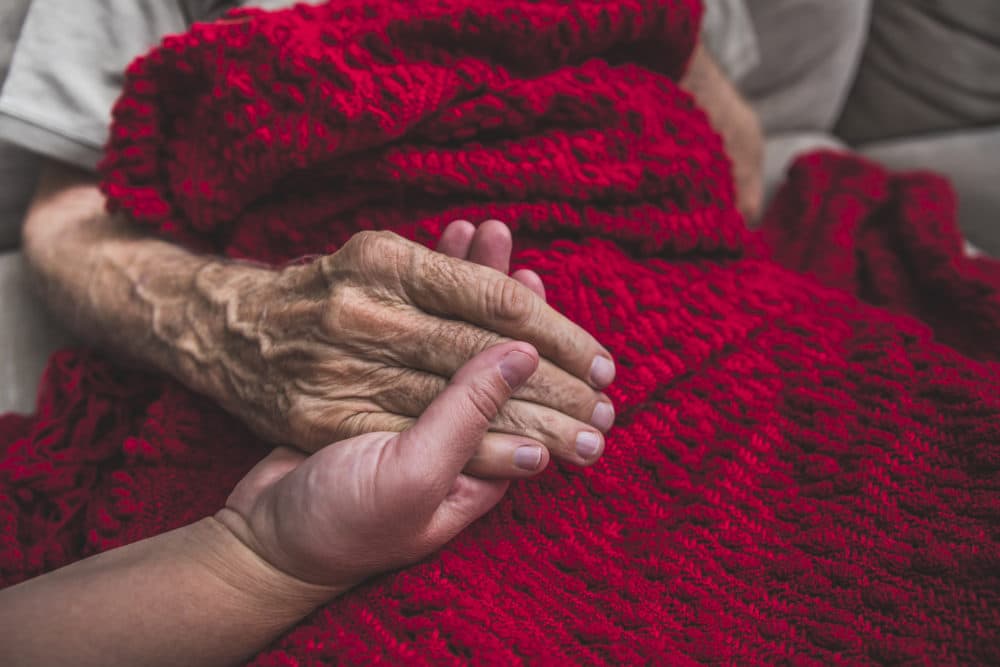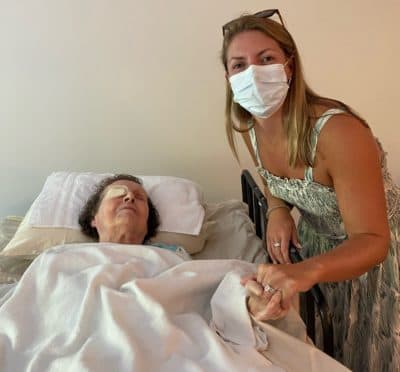Advertisement
Commentary
My grandmother died at home, just as she wanted. It cost $145,000

My grandmother died at home recently, surrounded by her family and loving caregivers with the support of a hospice team. It was exactly how she pictured the end of her life, and it cost our family $145,613.79.
Many people envision their final days like my grandmother did, being comfortable at home surrounded by friends and family. A recent Kaiser Family Foundation (KFF) poll found that 71% of Americans would prefer to die at home. And over the last 20 years, the number of people using Medicare’s hospice benefit has more than doubled.
What a lot of people don’t know is that dying at home can cost a small fortune.
I am a geriatric nurse practitioner and the recent experience with my grandmother makes me question what I recommend to patients. As a clinician, I’ve been trained to explain hospice to patients as “an extra layer of support” at the end of life. It focuses on comfort care, such as medications, equipment, chaplain support and a 24-hour hotline staffed by a nurse. The problem is that the bulk of the hands-on care in hospice — including changing diapers, feeding and giving medications — still falls to the family.

For this reason, dying at home is often unattainable for many, unless they have family members who are willing to give up their own lives to be caregivers or the patient is willing to spend down their life savings to qualify for Medicaid to pay for around-the-clock help. Currently, Medicare only covers an average of two hours per day, five days a week, of home health aide coverage for a patient in hospice care. This is not sufficient time to meet basic care needs for someone seriously ill, let alone provide necessary supports at the end of life.
The support system for older adults at the end of life in this country is wildly inadequate. And the problem is urgent. The Centers for Medicare and Medicaid Services (CMS) recently reported that almost half of Americans now die in hospice care. And data suggests that the number of adults over 85 years old will double by 2032 and triple by 2050. Medicare should restructure hospice reimbursement to cover more of the hands-on caregiving, thus decreasing the financial burden of dying at home.
There’s been some legislative action on this front. Former Rep. Thomas Suozzi (D-NY) introduced a bill in June 2021 called the “WISH Act” (Well-Being Insurance for Seniors to be at Home) that sought to increase financing for long-term care services, to help protect middle-income Americans from being saddled with massive medical bills. It would have provided an additional $3,600 per month toward caregiving costs. But the legislation didn’t gain enough traction for a vote.
When my grandmother was ready to be discharged from the hospital in January of 2022 her care needs were deemed too high for her to return to the assisted living facility where she’d been living for more than seven years. My family chose to send her to a rehab facility, hoping she could regain enough strength to return to assisted living.
[My grandmother] was too weak for rehab and too dependent to return to assisted living. We felt like we were being held hostage by a broken system.
But the intensive physical therapy proved to be too difficult for her, and Medicare stopped paying for her stay in rehab when she stopped participating in therapy. We were charged $4,395 per week, while she was essentially stuck in rehab limbo. By some miracle, after three weeks, we did get approval for her to return to her assisted living facility. But that only lasted three days. They sent her back to the hospital because her care needs were too high for them to manage.

So, once again, my 89-year-old grandmother was in the hospital with no place to go. She was too weak for rehab and too dependent to return to assisted living. We felt like we were being held hostage by a broken system. Even as a nurse practitioner working in geriatrics, the situation felt impossible to navigate. I spent hours on the phone trying to figure out what the best next steps would be for my grandmother in Boston, all while managing my own patients in New York. At the same time, I was trying to support my mom as she was coming to terms with my grandmother’s declining health.
We ran a lot of numbers and considered several options. Ultimately, we figured out it would be less expensive for my grandmother to rent a one-bedroom apartment in Boston, close to my mom, and hire 24-hour care. That option was less expensive than going to a long-term care facility. And still, the total monthly cost was $16,200: $13,000 a month for the 24-hour care, plus $3,200 to rent the apartment. This is hardly a realistic solution for most people.
Stories like this one can make people examine their own mortality. How will you afford to spend your final years of life? How much will your death cost you and your family? Can you afford it?
We know my family’s story is not unusual. A recent poll asked what’s most important to people when thinking about their own death — more than half of people said making sure their families aren’t burdened financially is “extremely important.”
As my grandmother lay at home during her final days, we felt so grateful for the paid caregivers that had become family: They provided us with grace and compassion during the most vulnerable moments of her life, they offered her comfort and peace. She was exactly where she wanted to be, surrounded by loved ones in a place that was familiar.
But at the end of it all, I couldn’t help thinking, what will be the final bill?
